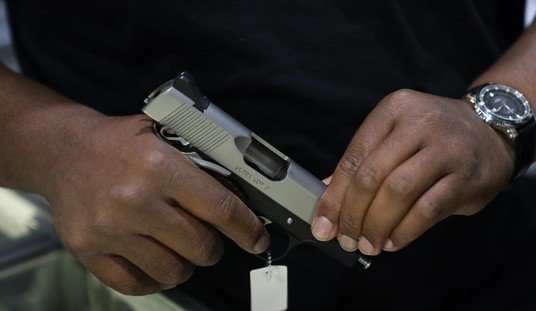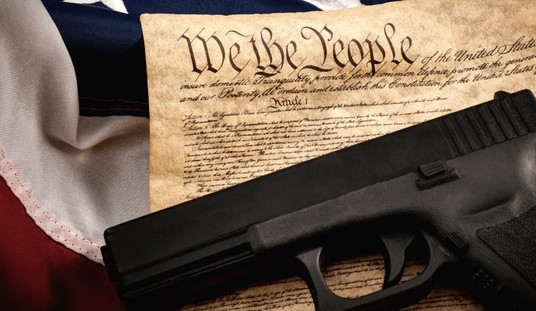We’ve had our run-ins with fanatical Slate writer Mark Joseph Stern before. He attempts to give off the air of being very confident in what he’s writing about, even when he’s completely wrong.
His latest sophomoric rant, Nazi Roots, EU Violations, and Mass Shootings: Meet the shady gun manufacturer whose rifle killed 49 people in Orlando, is a perfect example of the Wikipedia-driven “explainer” journalism that has so many people convinced that millennials are functionally retarded.
The goal of Stern’s article is as obvious as it is simple: instead of blaming a gay-hating Islamic terrorist Democrat for the deadliest Islamic terrorist attack on American soil since 9/11, he wants to wrap himself in his “COEXIST” banner and vilify the American manufacturer of the rifle used in the shooting instead.
It’s an altogether pitiful performance, marked by revisionist history and an an attempt to blood-libel the Exeter, New Hampshire-based company for the “sin” of one of their two parent companies producing a handgun for Germany during World War II.
Get a load of this utter trainwreck.
…it was not the NRA that produced the rifle that killed 49 people and injured 53 at Pulse, nor the NRA that continues to profit directly from the rifle’s sale to civilians. It was Sig Sauer. My colleague Rachael Larimore recently noted that the media’s reportage on firearms is often shallow and sloppy. I agree. And in the spirit of more comprehensive reporting, let’s look into the past and present operations of the company whose MCX rifle fired the bullets that killed 49 people at Pulse on June 12. It is a history of Nazi collaboration and alleged illegality that seriously undermines Sig Sauer’s carefully crafted image as a noble company of wholesome roots.
Sig Sauer’s website correctly notes that one parent of the company, Sig, was founded in Switzerland in the 1850s and broke into the arms business by developing a state-of-the-art rifle for the Swiss Army. “Fast-forward to the 20th century,” the company’s history continues, jumping ahead to 1949—with no suggestion as to what occurred in the interim. This elision is understandable: Sig spent World War II aggressively courting the Nazi government, eager to sell its firearms to the Nazi army.
Unfortunately for Sig, Nazi officials had established foreign exchange controls that limited the government’s ability to purchase Swiss goods, and German firearms manufacturers held a monopoly on the market. So Sig had to sit out the war, unable to sell weapons to Nazis despite its best efforts.
Sauer, Sig Sauer’s other parent, suffered no such misfortune. A German company based in the Rhine, Sauer did robust business with the Third Reich, supplying nearly 295,000 Sauer 38H guns to equip the military, police, and Nazi party officials. (Sauer’s Nazi-era guns remain quite popular among a certain subset of firearm enthusiasts.) After the war, demand for firearms in Germany plummeted, and Sauer’s future appeared grim.
But where Sauer saw a gloomy future, Sig saw an opportunity. In the 1970s, Switzerland enacted laws limiting Swiss companies’ ability to manufacture firearms within the country. But companies could work around this restriction by partnering with a foreign manufacturer. Sig chose Sauer, and both companies benefited from the partnership. In 1985, Sig opened an American branch called Sigarms; in 2000, a German holding company purchased Sig, Sauer, and several sister companies, creating the modern Sig Sauer.
It tells you a lot about a journalist when he mentions the history of a company (J.P Sauer and Sohn) decades older than the existence of United States only in passing, and the history of another company more than 163 years old (SIG), only so that he can tie them to the brief period at Sauer provided a small .32 ACP pistol, the Sauer 38H, to German police, military officers, and political functionaries who didn’t need a handgun for battlefield service.
The 38H was the least well-known of the Nazi-era German handguns, with the WWI-era 9mm Luger pistol (manufactured in the millions) and the World War II era Walther P38 9mm pistol (roughly 1 million produced) being produced in much greater quantities.
The rest of Stern’s hit piece is just as rife with huffy assertion and innuendo, and glaringly short on facts.
Cravenly, Stern intentionally refuses to note that Sig Sauer has developed a number of highly successful firearms for law enforcement, military, and civilian purchasers, and that their handguns and rifles have saves countless lives under threat from criminals and terrorists.
The Sig Sauer P226 was nearly adopted as the U.S. Army’s standard service pistol in the 1980s, an honor that eventually went to the Beretta M9. The P226, still went on to be the handgun of the U.S. Navy SEALS, and a slightly smaller version of the basic design gun, the P228, became the military’s M11. The SEALs use the M11 and the P239. Sig Sauer’s most advanced current pistol, the P320 series, is a modular handgun system that appears to be the gun to beat in the competition to become the next handgun for the United States Army and Air Force.
It’s odd how Stern left all of that out of his story.
Other P220-series and P320 pistols have served in local, state, and federal law enforcement agencies across the United States, helping keep the peace across the nation for decades. The Secret Service carries the P229, as do Air Marshals. The RFP for the FBI’s next service handgun is tailored to the Sig Sauer P320. Civilians have likewise come to rely upon a wide range of Sig Sauer handguns for their personal safety, and I’ve recently carried a Sig Sauer P239 in .357 SIG to defend my life in less than ideal circumstances.
Stern likewise “forgets” to note that the Sig M400 and SIG516 rifles perform a similar role for law enforcement and civilians needing a patrol rifle for self-defense and target shooting, and that the MCX used by the gay-hating Islamic terrorist Democrat in Orlando was designed for use by other defenders of life in the U.S. military, law enforcement and civilian firearms markets.

The MCX is popular with police worldwide including the Scotland Yard London Metropolitan Police SWAT teams known as “Met specialists.”
No, Mr. Stern didn’t want to discuss Sauer’s three centuries of making firearms for military, police, and civilian sales, nor Sig’s history of defending the neutrality of that nation, nor that Sig Sauer had a shooting academy that trains SWAT officers like those that raided the Pulse and brought the gay-hating Islamic terrorist Democrat’s rampage to an end.
Mentioning those realities wouldn’t serve this gun-hating progressive’s attempt to demonize a company that has a reputation for making among the most accurate and reliable firearms used to protect American lives.








Join the conversation as a VIP Member